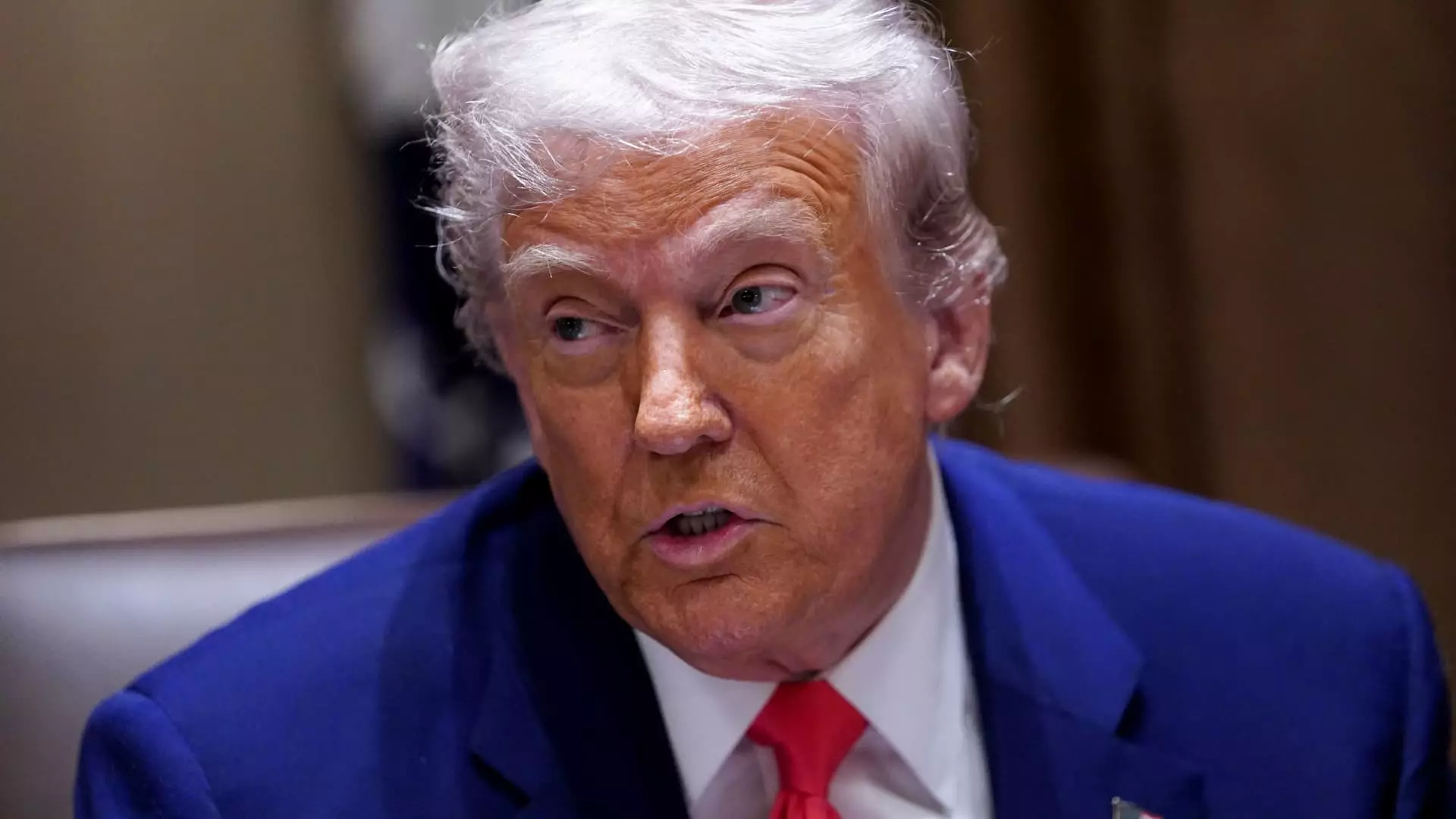The recent implementation of a staggering 145% tariff on Chinese imports signals an unprecedented level of protectionism by the U.S. under President Donald Trump. Economist Erica York has highlighted the severity of such tariffs, suggesting that anything approaching triple-digit rates essentially ends meaningful trade between the two countries. This isn’t just an economic strategy; it is a high-stakes gamble that could unravel decades of trade partnerships and economic interdependence. The question looms: are these bold tariffs a strategic move or a reckless miscalculation?
Market Reactions and Economic Reality
The immediate reaction from financial markets has been one of trepidation. After witnessing significant gains, investors watched those profits evaporate as confirmation of the tariff hike became public. Such knee-jerk responses are not merely speculative; they reflect deep-rooted fears regarding a prolonged economic standoff between the U.S. and its largest trading partner. With uncertainties hanging in the air—especially concerning the potential reversal of tariffs in July—businesses are left in a precarious position. The lack of clear direction from the administration only exacerbates anxieties about the future of American commerce.
York notes that while some goods may need to be imported regardless of tariff costs, many businesses will feel the immediate financial burden. The ongoing volatility in trade policies could discourage investment and stifle innovation, leading to a long-term economic downturn—a reality that seems glaringly probable.
The Economic Cost: Historical Comparisons
The implications of these tariffs extend beyond mere trade numbers; they form the backbone of a larger economic narrative that reflects back to the protectionist policies of the 1940s. As York timely points out, the raised tariff levels parallel an era that many have long regarded as detrimental to economic health. The Tax Foundation has estimated that these tariffs will yield a staggering $171.6 billion in federal revenue for the year, marking the most significant tax increase since 1993. When compared with tax hikes under former presidents George H.W. Bush and Barack Obama, Trump’s tariffs represent a seismic shift in fiscal policy.
However, one must ponder the actual beneficiaries of this revenue surge. Who profits in a market constrained by such tariffs? Is it the American consumer, who faces the inevitability of higher prices, or is it the government coffers filled by a temporary spike in taxes? The underlying question remains: at what cost does this financial gain come?
China’s Resilience and Retaliatory Measures
China’s reaction to this surge in tariffs has been equally assertive. As the U.S. escalates its economic hostilities, China has raised its retaliatory tariffs on American goods, thus deepening the chasm between the two superpowers. The introduction of an 84% tariff from an already elevated 34% rate signifies an unwillingness to capitulate. This tit-for-tat strategy demonstrates not just economic resolve, but a willingness to endure short-term pain for long-term competitive viability.
Interestingly, the Trump administration’s reluctance to extend tariff relief to China demonstrates a prioritization of domestic political optics over pragmatic economic strategy. While the president’s cabinet meeting hinted at a possible pause in tariffs for other nations, the obstinate stance towards China portrays a hardline approach that could isolate the U.S. on the global stage.
The Future: Unpredictable Yet Inevitable Consequences
As we navigate the complexities of this tariff-induced turbulence, it is vital to recognize the broader implications for both the U.S. and global economy. Historically, protectionism has stifled growth and innovation, leading countries into a downward spiral of trade wars. The lack of clarity and defined purpose in Trump’s commodity strategy raises concerns about long-term viability and economic coherence.
In the months to come, the American public and corporate sectors must brace themselves for the ramifications of these policies, some of which will certainly be felt across all levels of society. The potential rejection of established trade norms, compounded by a rapidly evolving global landscape, may indeed lead to unforeseen economic strife. In the end, the true cost of these tariffs may turn out to be more than just a line item in the budget; it could be a generational setback for the American economy.

